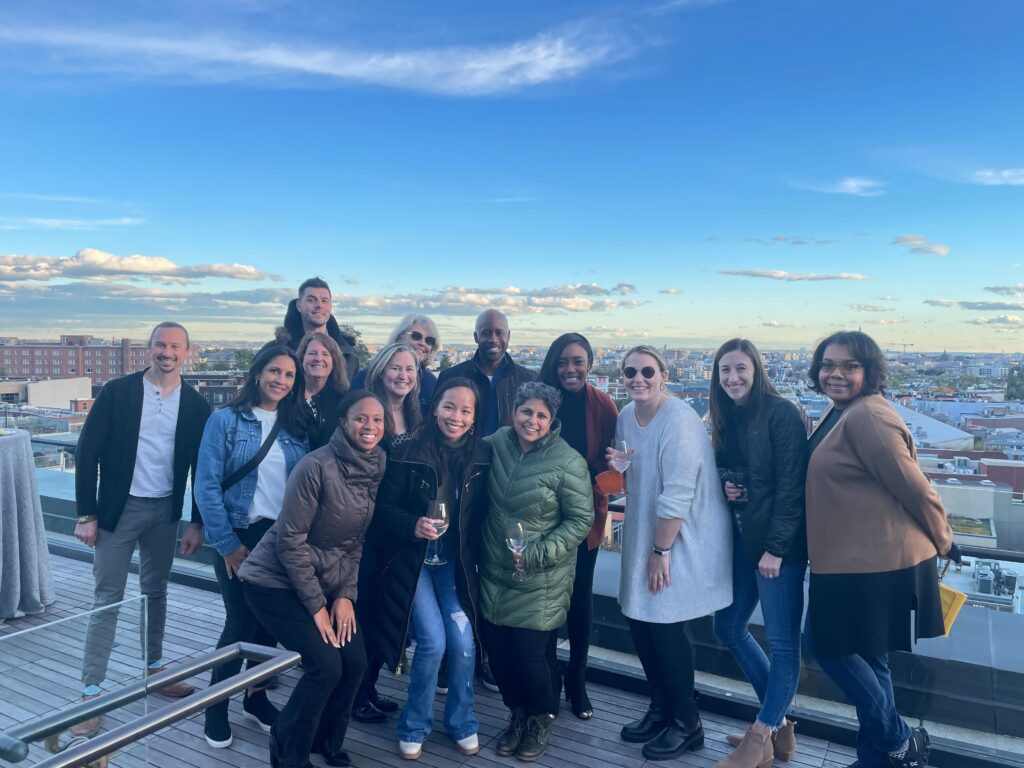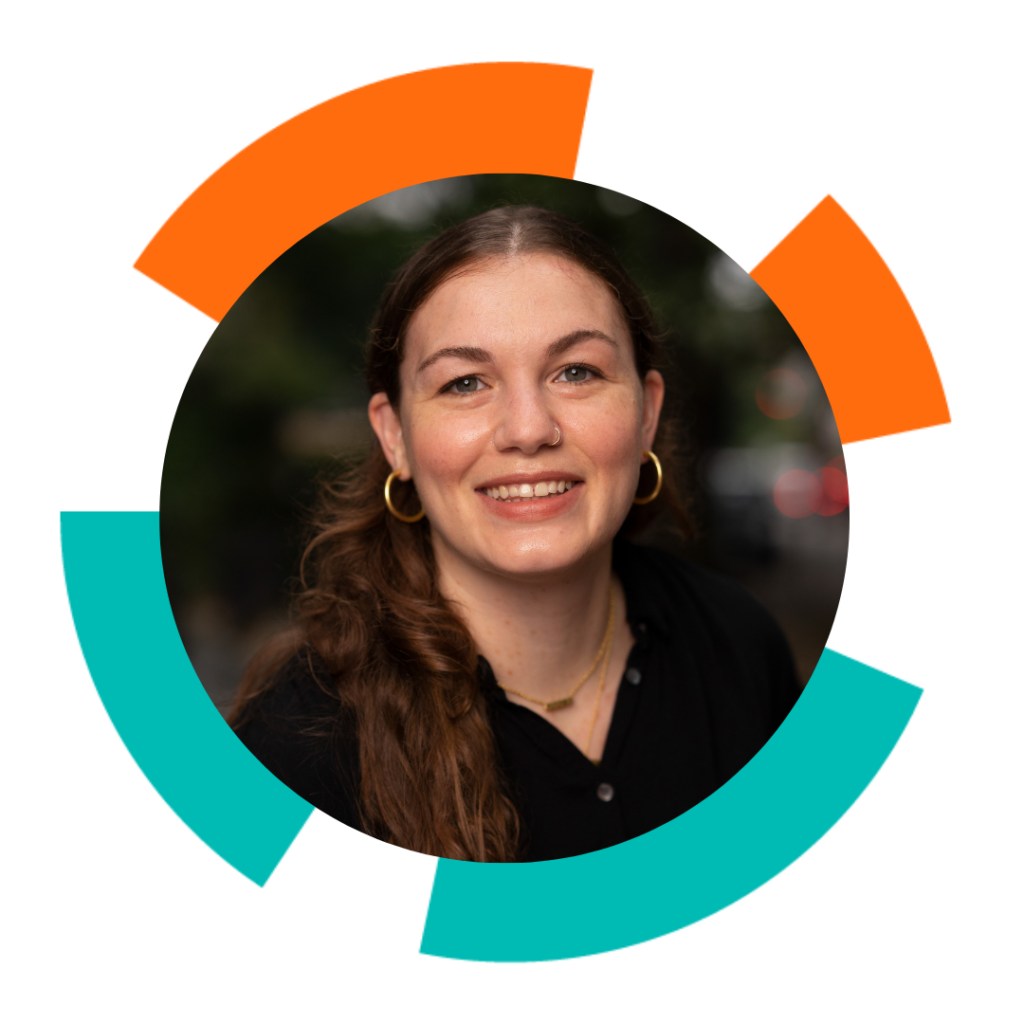Lessons Learned for Why a Teams-Based Approach Can Advance Equity
by Monica Biswas and Rosie Aquila
Monica and Rosie have partnered on the design and facilitation for three of ProInspire’s team-based cohorts. These reflections and learnings stemmed from their experiences, observations, and feedback from participants in these programs.
April 20, 2023
ProInspire’s work with team-based cohorts started in 2018. At the time, we were observing that senior leaders of color who held the equity work for their organizations were struggling to gain support with staff or board members.
But what if we could bring these teams together to build alignment? This idea sparked a collaboration with our partner Change Elemental, who at the time had previously worked with boards around racial equity. With support from Kresge Foundation, we convened small teams of staff and board members from multiple organizations to work together to develop race equity priorities for their organizations.
Since then, ProInspire has partnered with Meyer Foundation, Kauffman Foundation, and Kresge Foundation to convene grantees in four additional team-based communities of practice to support organizations to advance racial equity. In these cohorts, teams of two to six staff or board members from different organizations engage in learning sessions, peer sharing and relationship building, as well as coaching for the organizational team.
Over the years, we’ve observed just how effective this model is for advancing racial equity within organizations. With our fifth community of practice wrapping up, we’re excited to share with you key learnings about this approach.
But first, let’s talk about the ways we’ve seen racial equity work done in the past. While these approaches might be the “standard,” they’re not exactly tried-and-true because they’re often not sustainable or effective when it comes to organizational transformation.
Individual Capacity Building. Has this happened to you? You just attended a conference or training, where you felt inspired and eager to put things into practice back at your organization. When you return to work, you try to apply your new skills and strategies. However, no one else has had the same experience, and it’s a struggle to transfer those valuable insights to others. What felt like a great opportunity now feels like steering the Titanic. Over time, other priorities take control and you lose steam. And, if you leave the organization, that knowledge and insight goes with you. If this sounds familiar, you’re not alone. We see this happen all the time when it comes to racial equity work. The bottom line is that change shouldn’t be held by a single individual because organizational transformation requires collective learning, commitments, and action.
Consultant Outsourcing. Another way we’ve seen racial equity work held is when an organization hires an external consultant to create a plan for them. The consultant does extensive data gathering, synthesizes the information, and produces key findings and a race equity plan as their deliverables. The challenge here is that the consultant’s work is often held by the organization as a rigid plan — after all they probably paid a lot of money for it — and that prevents the organization from embracing emergence and being responsive to new insights and shifting contexts as their organization evolves. If there’s one constant in life, it’s that things change. Holding a race equity plan in your organization as a rigid document is not going to support you long term. And once the consultant leaves with their ‘expertise,’ the staff has not built up the capabilities to continue the work themselves. As a result, the organization’s progress is halted.
If these are some common challenges to how race equity work is traditionally approached, what makes a team-based cohort different? Here are some of our key takeaways from what we’ve observed and learned about this model.

- A team ensures persistence of the work. When you have a team focused on race equity transformation, others can continue the work even when an individual member leaves your organization or takes a step back to rest or focus on other priorities. The 2022 Catalyzing Leadership for Equity report from the Urban Institute also notes that a team-based approach encourages participants to think about equity and change beyond their individual capabilities and leadership development, but rather held as a “collective process that is distributed in neighborhoods, across communities, at the local level, and in organizations and institutions.”
- A team allows different perspectives to inform the work. Diversity is always valuable, and is especially essential when you’re developing a race equity strategy for your organization. For the strategies to truly meet the needs of an organization, you need input from folks with different identities, positions in the organization, and lived experiences and perspectives. Rather than one person’s opinion driving an organization’s plan, a team-based approach purposefully brings in different perspectives, which ultimately leads to more comprehensive strategies and a shared commitment to a plan. In our cohorts, we bring together folks with diversity across multiple dimensions: racial/ethnic and other identities, as well as varying roles and levels of positional authority. These perspectives serve to inform the development, and the ultimate implementation, of your race equity strategy.
We’ve also observed that in addition to the team aspect within one organization, bringing together multiple teams in a cohort for learning and relationship-building also adds significant value for an organization’s change process.
- A facilitated cohort with regular touchpoints provides a consistent cadence to keep focus on the work. A common barrier to advancing equity goals that we hear from organizational leaders is time. Too often, leaders are unable to move their racial equity strategies forward because they feel constrained by other day-to-day priorities of their work. We encourage leaders to reframe how they hold racial equity as integral to all aspects of their work, so that it does not feel separate or in addition to. Having monthly facilitated cohort sessions helps create a structure to keep the energy alive, build accountability, and habitualize a team to meeting regularly, so that the work continues beyond the program and infuses racial equity throughout the organization.
- A facilitated cohort offers the team practice in building the race equity ‘muscles’ needed for transformational change. Race equity transformation goes beyond trainings and policies, and requires new ways of operating that shift away from white supremacy norms. This requires practice and experimentation—and staying power so that when things get uncomfortable or challenging (and they will!), the team is equipped to keep going. Having a facilitated space helps to build that muscle because there’s an outsider who can “hold the container” and guide folks through discomfort. For example, in our model, ProInspire’s facilitation team helps the cohort develop community agreements for a “brave space” that encourages participants to experiment, reflect, and iterate on new learnings. In turn, these agreements support participants with challenging norms of perfectionism. It’s OK to be in the messy middle—in fact, we encourage it! The facilitation team also guides teams through emergence by encouraging them to pivot when new insights arise, challenging one right way or objectivism. Finally, teamwork exercises allow individuals to practice collective decision-making that is not rooted in hierarchy. In building these skills, mindsets, and race equity “muscles,” the team can continue the work within their organization beyond the end of the cohort experience and without reliance on an external consultant.
- A facilitated cohort guides participants towards deeper vulnerability, trust, and relationship-building with their teams—and across the cohort. Throughout the cohort experience, teams are guided through what could otherwise be very challenging conversations that require candor, vulnerability, and authenticity. While the conversations are not always easy, what we’ve observed is that teams leave the program with more trust and a willingness to dive deep. Within organizational teams, staff with and without positional authority reported feeling more equipped to have challenging discussions about the inequities in their workplace even beyond the program. We also heard from white participants that as a result of the program, they felt ready to take on racial equity work in a more personally-grounded way. Some also named feeling less trapped in paralysis or deferring to their colleagues of color. What’s also meaningful to witness is the relationships that are established across the cohort! People of color who may be the “only” in their team or department found meaningful support from cohort members through affinity groups, and continue to connect after the end of the program. The cohort experience has also launched new partnerships and initiatives across participating organizations, even when they have different issue areas or missions.
It’s been an exciting journey so far, and we continue to be in deep exploration about our team-based cohort model!
Some questions we’re holding as we consider what’s next for this model are the value of cohorts that focus on a specific geography, or issue area, as well as the value of cohorts with a range of issue areas coming together to promote new cross-sector collaborations and ecosystem development.
If you’re a funder and interested in discussing the team-based approach, we’d love to get your perspective and advice on some of these questions. Please connect with us here!
If you’re a nonprofit leader and think you might benefit from this type of experience, we’d love to explore how we might partner together! Connect with us here!

Director, ProInspire

Strategist, ProInspire
